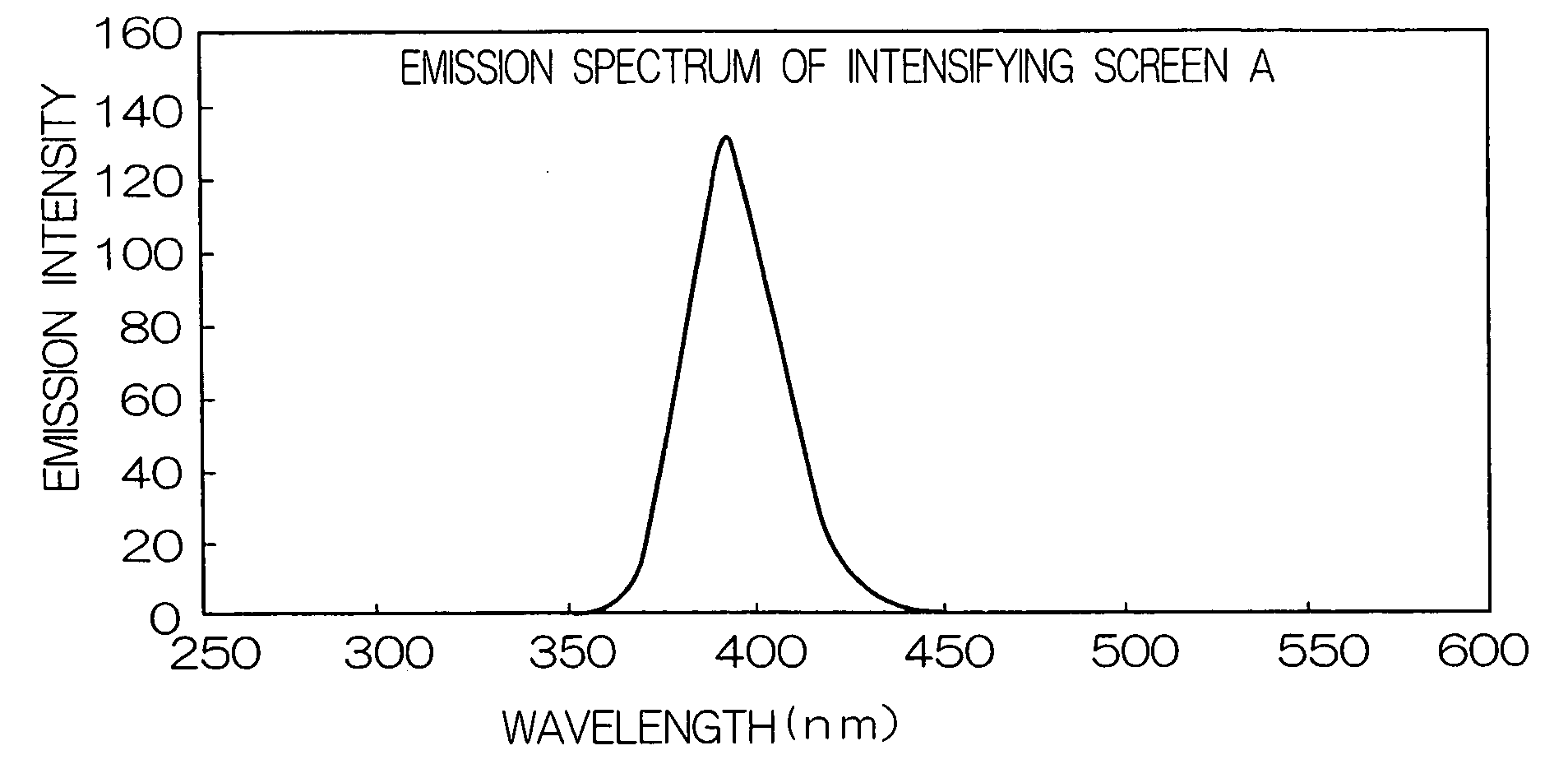Photosensitive silver halide emulsion, silver halide photographic photosensitive material, photothermographic material and image-forming method
a technology of silver halide and photosensitive material, which is applied in the field of photosensitive silver halide emulsion, silver halide photographic photosensitive material, photothermographic material and image-forming method, can solve the problems of deteriorating image storability, not reaching the level capable of replacing conventional wet development medical silver salt film, and not satisfying image quality
- Summary
- Abstract
- Description
- Claims
- Application Information
AI Technical Summary
Benefits of technology
Problems solved by technology
Method used
Image
Examples
example 1
1. Preparation of PET Support and Undercoat
1-1. Film Formation
PET was made of terephthalic acid and ethylene glycol in an ordinary manner and had an intrinsic viscosity IV of 0.66 (measured in a mixture of phenol and tetrachloroethane at a weight ratio of 6 / 4 at 25° C.). This was pelletized, and the resultant was dried at 130° C. for 4 hours. This pellet was colored with a blue dye, 1,4-bis(2,6,-diethylanilinoanthraquinone) and the resultant was extruded out from a T-die, and rapidly cooled. Thus, a non-oriented film was prepared.
The film was longitudinally oriented by rolls rotating at different circumferencial speeds at 110° C. so that the longitudinal length thereof after the orientation was 3.3 times as long as the original longitudinal length thereof. Next, the film was laterally oriented by a tenter at 130° C. so that the lateral length thereof after the orientation was 4.5 times as long as the original lateral length thereof. Next, the oriented film was thermally fixed...
example 2
Preparation of Fine Particle Emulsion A
4.3 ml of a 1 mass % solution of potassium iodide, 3.5 ml of 0.5 mol / L sulfuric acid and 36.7 g of phthalated gelatin were added to 1420 ml of distilled water. The resultant solution was kept at 25° C. while it was being stirred in a reaction vessel made of stainless steel. The entire amount of solution A obtained by diluting 22.22 g of silver nitrate with distilled water so that the total amount of the resultant became 195.6 ml and the entire amount of solution B obtained by diluting 21.8 g of potassium iodide with distilled water so that the total amount of the resultant became 218 ml were added to the content of the reaction vessel at a constant flow rate over nine minutes. Subsequently, 10 ml of a 3.5 mass % aqueous solution of hydrogen peroxide and 10.8 ml of a 10 mass % aqueous solution of benzimidazole were added to the content of the reaction vessel.
Further, a solution C obtained by adding distilled water to 51.86 g of silver nitra...
example 3
1. Preparation of Fluorescent Intensifying Screen
1) Preparation of Undercoat Layer
A light reflection layer made of an alumina powder and having a dry thickness of 50 μm was formed on a support made of polyethylene terephthalate and having a thickness of 250 μm in the same manner as in Example 2 of JP-A No. 2001-124898.
2) Preparation of Fluorescent Substance Sheet
250 g of BaFBr:Eu fluorescent substance (average grain size: 3.5 μm), 8 g of a polyurethane binder resin (Pandex T5265M (trade name) manufactured by Dai Nippon Ink and Chemicals Incorporated), 2 g of an epoxy binder resin (Epicoat 1001 (trade name) manufactured by Yuka Shell Epoxy Co.) and 0.5 g of an isocyanate compound (Colonate HX (trade name) manufactured by Nippon Polyurethane Industry Co., Ltd.) were added to methyl ethyl ketone, and the resultant mixture was stirred by a propeller mixer to prepare a coating liquid for forming a fluorescent substance layer having a viscosity of 25 PS at 25° C. The coating solut...
PUM
 Login to View More
Login to View More Abstract
Description
Claims
Application Information
 Login to View More
Login to View More - R&D
- Intellectual Property
- Life Sciences
- Materials
- Tech Scout
- Unparalleled Data Quality
- Higher Quality Content
- 60% Fewer Hallucinations
Browse by: Latest US Patents, China's latest patents, Technical Efficacy Thesaurus, Application Domain, Technology Topic, Popular Technical Reports.
© 2025 PatSnap. All rights reserved.Legal|Privacy policy|Modern Slavery Act Transparency Statement|Sitemap|About US| Contact US: help@patsnap.com



